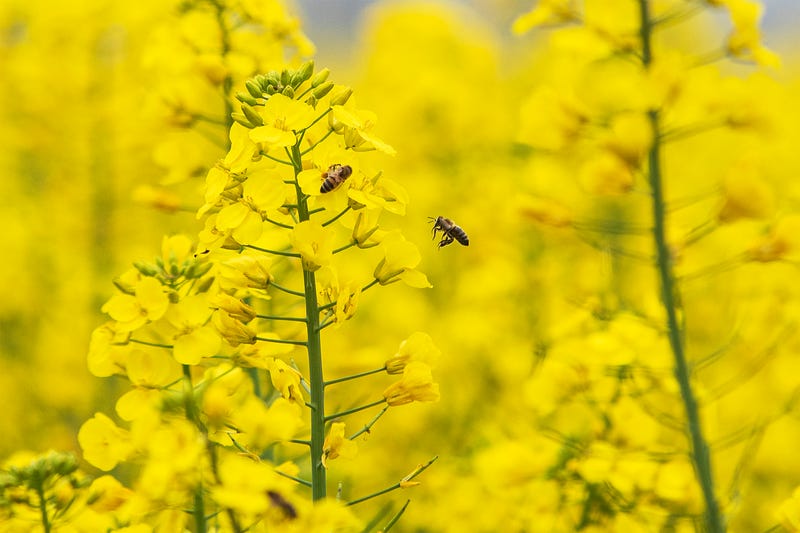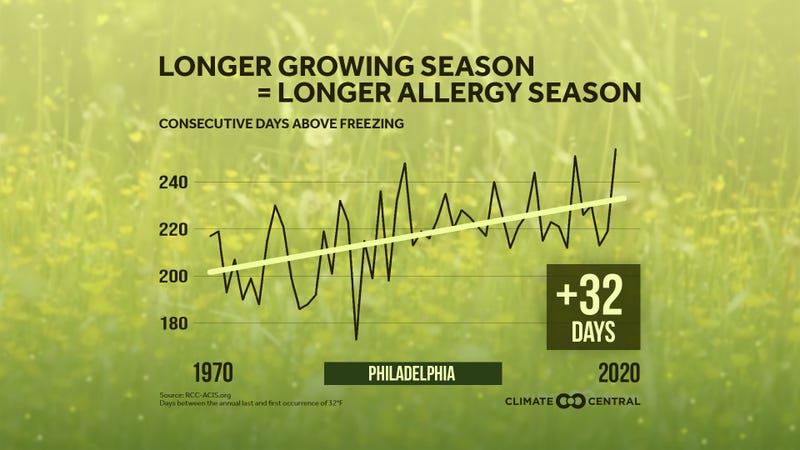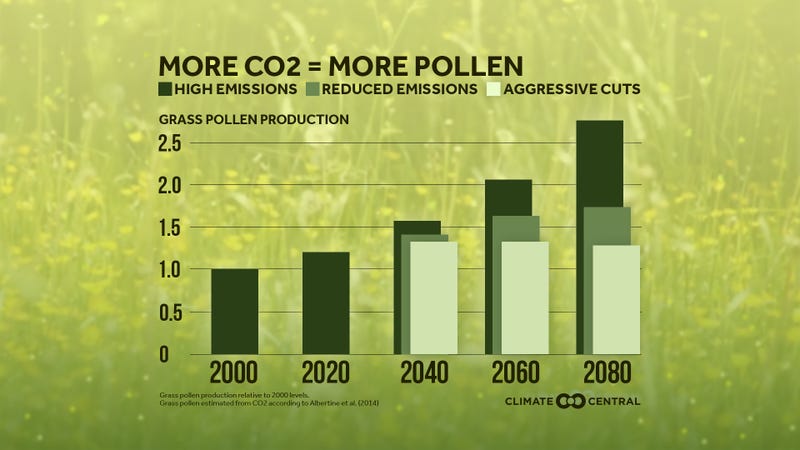
PHILADELPHIA (KYW Newsradio) — New research on climate change shows the growing season has increased by 30 days in the greater Philadelphia region over the last 50 years — and with that comes a longer pollen and allergy season.
“The climate is changing and this is one of the impacts,” said meteorologist Sean Sublette with Climate Central, a nonprofit dedicated to researching climate change and its impact.
“With the longer growing season is going to come a longer pollen season, which means a longer allergy season — which means we’re going to have longer periods where people are not just susceptible to allergies. For those people who have that as a trigger for asthma, that also worsens those potential aspects as well.”
According to the Centers for Disease Control and Prevention, more than 25 million Americans have seasonal pollen allergies.
Seasonal allergies can cause severe respiratory problems for people who struggle with asthma or the like. The lengthier allergy season could also burden more vulnerable populations, including low-income and minority communities, because asthma is more prevalent in low-income families, according to Climate Central.
Sublette said one way to address rising carbon dioxide rates — which is directly linked to pollen production — is removing carbon from the air.
“If we start cutting emissions now and decarbonize the energy sector,” he explained, “that will kind of put a cap on this big increase in pollen concentrations during the allergy season in the decades to come.”
According to Climate Central, projections based on reduced emissions show significantly lower pollen counts. That means the severity of seasonal allergies could be influenced by cutting carbon-based fuels.
Without any changes, pollen levels could be nearly three times higher in 60 to 70 years.
“If we continue to emit greenhouse gases at the current rate, we could see almost two, two-and-a-half times as much pollen in the air during allergy season by the end of the century,” Sublette added.


